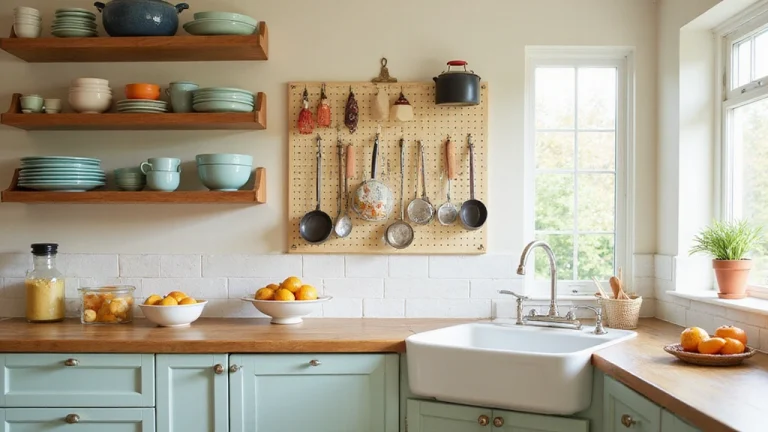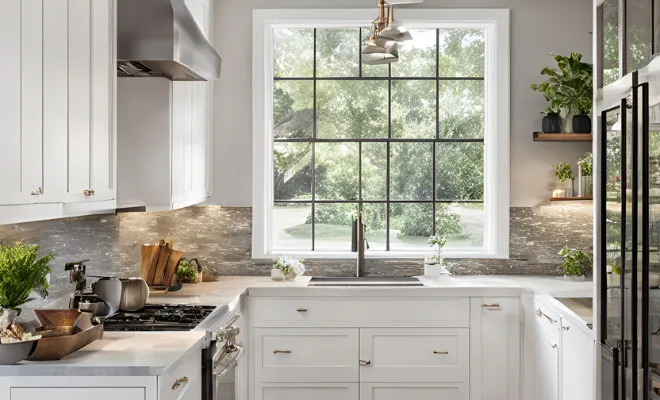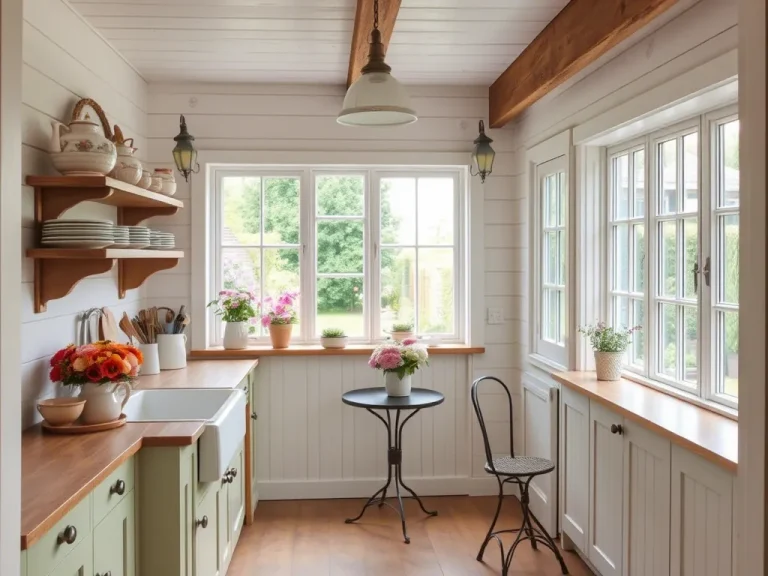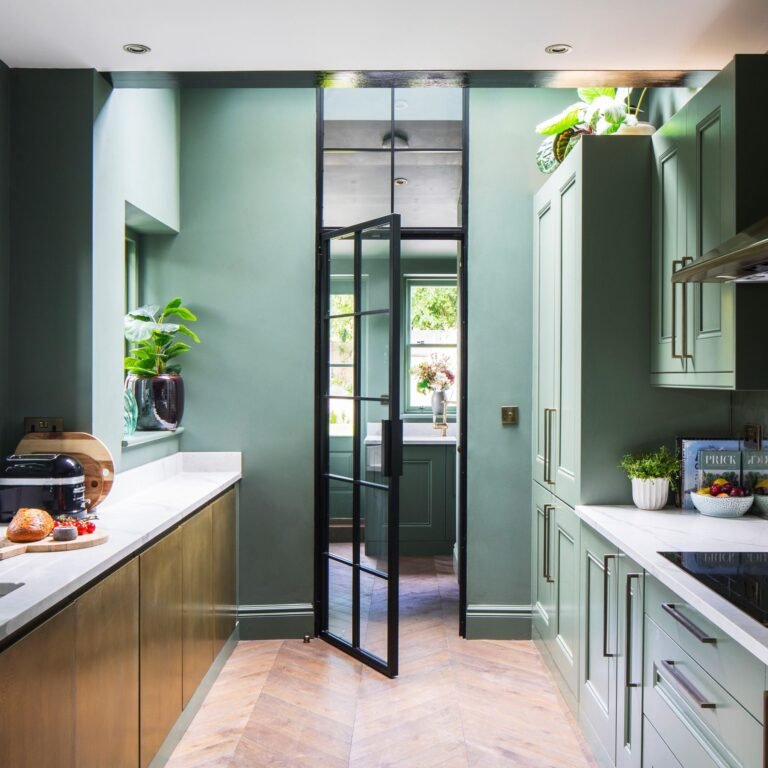Open-Concept Contemporary Kitchen Trends and Design Tips for Modern Homes

Open walls changed everything about how we live. Remember when kitchens hid behind doors, isolating whoever cooked from family and guests?
Those days are gone. Today’s homeowners want connection, conversation, and spaces that flow naturally from cooking to living to dining without walls interrupting the experience.
Open-concept contemporary kitchens respond perfectly to this shift by creating unified spaces where cooking becomes part of family life rather than separate from it.
These designs blur boundaries between kitchen and living areas while maintaining distinct zones through smart layout, cohesive materials, and thoughtful transitions. The challenge isn’t just removing walls—it’s creating open spaces that actually work better than separated rooms.
We’re covering 10 open-concept contemporary kitchens trends and design tips that help you create flowing spaces without sacrificing function or style.
You’ll find layout strategies, material choices, transition techniques, and practical solutions for noise, mess, and visual clutter that open plans can create.
From island designs that anchor spaces to flooring choices that unify areas, storage solutions that hide kitchen chaos, and lighting plans that define zones, these trends show you how to make open concepts work beautifully.
Let’s explore what makes contemporary open kitchens successful beyond just knocking down walls.
Understanding Open-Concept Success Factors
- Defined Zones Within Open Space: Successful open kitchens create distinct areas for cooking, dining, and living without physical walls using furniture placement, lighting, and flooring changes. It’s like designing rooms within a room where function changes even though walls don’t exist. The invisible boundaries let spaces flow while maintaining practical separation.
- Cohesive Material Palette Throughout: Open concepts demand visual unity through consistent materials, colors, and finishes connecting kitchen to adjacent areas. It’s like speaking one design language across the entire space rather than switching dialects every few feet. The cohesion prevents the jarring transitions that make open plans feel disconnected.
- Strategic Storage Hides Kitchen Functions: Open-concept contemporary kitchens require exceptional organization since kitchen messes become visible to entire living spaces. It’s like performing onstage where the audience sees everything versus working backstage hidden from view. Hidden storage maintains the clean aesthetics open plans demand.
- Sound and Smell Management: Cooking noise, dishwasher rumble, and food aromas travel freely without walls to contain them. It’s like living in an amplified space where every kitchen sound and smell reaches living areas. Smart ventilation, quiet appliances, and material choices that absorb sound become essential considerations.
10 Open-Concept Contemporary Kitchens Trends and Design Tips
Create flowing, functional spaces with these open-concept contemporary kitchens trends that define modern living while solving practical challenges.
Oversized Island as Central Hub
Design a substantial island that anchors your open space serving as cooking station, dining spot, and social gathering point. The multi-functional centerpiece defines the kitchen zone while connecting to surrounding areas. It’s like creating a campfire around which everything else organizes naturally.
Size your island to accommodate seating on at least one side—typically 4 to 6 feet long minimum. Include storage, appliances, and ample counter space making it truly functional rather than decorative. This open-concept contemporary kitchens trend provides the missing wall’s function without blocking sight lines or flow.
Consistent Flooring Throughout
Extend identical flooring from kitchen through living areas creating visual continuity that unifies open spaces. The uninterrupted surface makes spaces feel larger and flow seamlessly. It’s like laying a foundation that connects separate zones into one cohesive environment.
Choose durable materials suitable for kitchen demands—luxury vinyl plank, large porcelain tiles, or engineered hardwood. The consistent floor eliminates transition strips that visually chop open spaces into segments. This open-concept contemporary kitchens design tip simplifies material decisions while expanding perceived space significantly.
Two-Tone Cabinetry for Definition
Use contrasting cabinet colors on the kitchen island versus perimeter cabinets defining the cooking zone within open space. The color change signals functional transition without physical barriers. It’s like painting boundaries that guide eyes without blocking movement or views.
Common approaches include darker island cabinets with lighter perimeters or bold island colors against neutral surroundings. The color variation adds visual interest while subtly indicating where the kitchen zone ends. This open-concept contemporary kitchens trend provides definition that open plans often lack.
Integrated Living Room Shelving
Continue kitchen cabinetry styling into living area built-ins creating visual connection between spaces. The consistent design language unifies separate functional zones. It’s like using the same vocabulary across different conversations where style threads through multiple areas.
Match living room shelving finish, hardware, and construction details to kitchen cabinets. The repeated elements create cohesion while providing valuable storage in both zones. This open-concept contemporary kitchens approach makes separated areas feel intentionally connected rather than accidentally opened.
Statement Lighting Defines Zones
Hang distinct pendant lights or chandeliers above island and dining areas creating visual anchors for different zones. The lighting fixtures define purposes without walls separating spaces. It’s like dropping pins on a map indicating what happens where.
Choose larger scale fixtures appropriate for open-concept contemporary kitchens where higher ceilings and larger volumes demand substantial lighting. The fixtures serve as functional art that guides traffic flow and activity placement. Dimming capability allows adjusting zones independently for different activities happening simultaneously.
Minimalist Range Hood Statement
Install a sleek, architectural range hood that becomes design focal point rather than functional necessity you’re trying to hide. The contemporary hood announces the kitchen zone boldly. It’s like placing a sculpture that ventilates while commanding attention.
Select canopy hoods, glass designs, or custom panels in materials echoing other finishes throughout your open space. The hood’s prominence makes it design element worthy of investment. This open-concept contemporary kitchens trend transforms required ventilation into intentional architectural statement.
Matching Backsplash as Accent Wall
Extend your kitchen backsplash material beyond the cooking zone as an accent wall visible from living areas. The continuation creates visual interest while connecting spaces. It’s like starting a sentence in the kitchen that finishes in the living room.
Use dramatic materials—book-matched stone, large format tile, or textured surfaces—worthy of feature wall status. The extended backsplash provides reason for material investment that would seem excessive behind a stove alone. This open-concept contemporary kitchens design tip maximizes material impact across multiple zones.
Hidden Pantry Storage Solutions
Integrate floor-to-ceiling pantry cabinets that blend seamlessly with wall surfaces hiding kitchen storage clutter. The concealed organization maintains clean aesthetics essential for open plans. It’s like having a closet that doesn’t announce itself as storage.
Design pantries with flat-panel doors matching surrounding walls or cabinet finishes. Interior organization systems maximize storage efficiency keeping everything accessible yet invisible. This open-concept contemporary kitchens trend solves the visibility challenge that makes messy kitchens problematic in open layouts.
Furniture-Style Island Design
Create islands resembling furniture pieces with legs, varied materials, or distinctive colors rather than built-in cabinetry appearance. The furniture aesthetic bridges kitchen and living zones naturally. It’s like placing a beautiful table that happens to contain appliances and storage.
Choose wood tones, painted finishes, or mixed materials that feel more furniture than kitchen cabinetry. Add decorative legs or open shelving making the island feel less built-in. This open-concept contemporary kitchens approach softens the kitchen’s utilitarian appearance making it feel more like living space.
Breakfast Bar Transition Zone
Design a raised breakfast bar on the living room side of your island creating subtle division between cooking and lounging areas. The counter height change defines boundaries without blocking openness. It’s like building a low fence that marks territory without closing it off.
The breakfast bar typically rises 6 to 12 inches above the main island surface providing sight-line barrier for kitchen mess. Add comfortable seating making it desirable gathering spot. This open-concept contemporary kitchens strategy protects living spaces from direct views of cooking chaos.
Design Tips for Open-Concept Success
- Plan Appliance Placement Strategically: Position noisy appliances like dishwashers away from primary living areas and consider quieter premium models. It’s like arranging furniture for conversation flow but thinking about sound instead. The dishwasher running during movie time becomes less problematic when distanced from seating areas.
- Invest in Powerful Ventilation: Upgrade to commercial-grade range hoods with higher CFM ratings ensuring cooking smells and steam don’t permeate living spaces. It’s like installing an atmospheric boundary where walls once provided physical separation. Quality ventilation prevents open-concept regret when cooking odors linger for hours.
- Create Visual Anchors in Each Zone: Use area rugs, lighting fixtures, and furniture arrangements that anchor distinct zones within the open space. It’s like creating rooms with furniture and light instead of walls and doors. The defined zones prevent the bowling alley effect where open spaces feel directionless.
- Maintain Consistent Style Throughout: Continue your contemporary aesthetic across kitchen and living areas rather than treating them as separate design projects. It’s like dressing in one outfit instead of mismatched pieces from different wardrobes. The stylistic consistency makes open plans feel intentional rather than accidental.
Frequently Asked Questions About Open-Concept Contemporary Kitchens
How Do You Hide Kitchen Messes in Open Plans?
Maximize closed storage with deep drawers, pull-out pantries, and appliance garages that conceal everything when not in use. Keep counters clear by designating spaces for daily items inside cabinets.
Consider a secondary prep kitchen or butler’s pantry for messy cooking tasks hidden from main sight lines. The discipline of putting things away immediately becomes essential in open-concept contemporary kitchens where messes are always visible.
What’s the Ideal Size for Open-Concept Kitchen Islands?
Plan islands at least 4 feet long and 2 feet deep minimum, with 6 to 8 feet being ideal for seating and multiple functions. Allow 42 to 48 inches of clearance on all working sides for comfortable movement.
The island should feel substantial enough to anchor the space without overwhelming it. In open-concept contemporary kitchens, the island often defines the entire layout’s success or failure.
How Do You Manage Noise in Open Kitchen Layouts?
Choose quiet dishwashers (below 44 decibels), install soft-close cabinet hardware, and use sound-absorbing materials like area rugs and upholstered furniture.
Add ceiling treatments like wood slat systems or acoustic panels that absorb sound while adding design interest. Consider the washer and dryer location if your laundry connects to the kitchen—isolating these noisy appliances protects open living areas.
Can You Create Privacy in Open-Concept Kitchens?
Partial-height walls, glass partitions, or sliding barn doors provide flexibility to close off kitchens when desired. Furniture placement can create subtle barriers using bookcases or console tables.
Some open-concept contemporary kitchens include pocket doors that slide away when open flow is desired but close for contained cooking sessions or hiding post-party messes.
What Flooring Works Best for Open Kitchen Spaces?
Luxury vinyl plank offers durability, water resistance, and comfort underfoot at reasonable prices. Large format porcelain tile provides contemporary aesthetics with excellent performance.
Engineered hardwood spans spaces beautifully though requires more maintenance in active kitchens. The key is choosing materials that handle kitchen demands while extending naturally into living areas without jarring transitions.
Making Open Concepts Work for Your Home
Open-concept contemporary kitchens revolutionize how families interact by removing barriers between cooking and living.
Remember that successful open-concept contemporary kitchens balance openness with definition. The spaces flow while maintaining distinct zones through furniture, lighting, and material choices that guide function without erecting walls.
Getting this balance right creates homes that feel spacious, connected, and perfectly suited to how modern families actually live. What’s your biggest open-concept challenge or question? Share your thoughts in the comments below!






